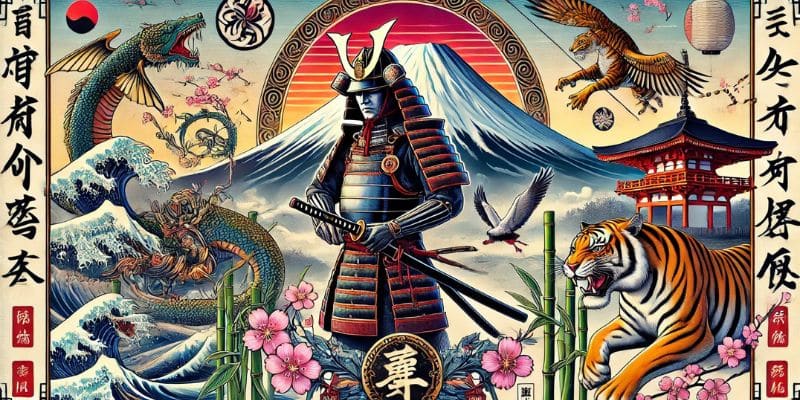Symbols were deeply woven into the fabric of samurai culture. These symbols represented the values, beliefs, and aspirations of the samurai and were often displayed on their armor, weapons, and personal items. From the powerful katana to the delicate cherry blossom, each symbol held a unique meaning and conveyed important messages about honor, courage, and the impermanence of life.
In this article, you’ll explore the fascinating world of samurai symbols and meanings. We’ll delve into the historical background of these symbols, explain their significance, and reveal the stories behind them. By the end of this journey, you’ll have a deeper understanding of how these symbols shaped the lives of the samurai and continue to influence Japanese culture today.

The Power of Symbols in Samurai Culture
In the world of the samurai, symbols played a vital role. These symbols weren’t just decorations; they were powerful representations of a samurai’s beliefs, values, and identity. Understanding these symbols gives you a glimpse into the heart of samurai culture and its historical context.
The samurai used symbols to communicate their ideals and lineage. For instance, family crests, known as kamon, were unique emblems that identified different samurai families. These crests were proudly displayed on clothing, armor, and flags, helping to distinguish allies from enemies on the battlefield. By recognizing these symbols, you could understand a samurai’s heritage and the honor associated with their family.
Nature also played a significant role in samurai symbols. Elements like cherry blossoms, bamboo, and animals such as dragons and tigers were commonly used. These natural symbols carried deep meanings: cherry blossoms represented the fleeting nature of life, bamboo symbolized resilience and flexibility, while dragons and tigers embodied strength and courage. These symbols reminded the samurai of their own virtues and the principles they were expected to uphold.
The katana, or samurai sword, is another iconic symbol. More than just a weapon, the katana symbolized a samurai’s honor and duty. The craftsmanship and care put into forging a katana reflected the samurai’s commitment to their code of conduct, known as Bushido.
By incorporating these symbols into their daily lives, the samurai created a rich tapestry of meaning and tradition. These symbols weren’t just about personal identity; they also served as constant reminders of the values that the samurai held dear, such as loyalty, honor, and bravery. Understanding these symbols helps you appreciate the profound cultural heritage of the samurai and their lasting influence on Japanese culture.
Common Samurai Symbols and Their Meanings
Katana
The katana, often recognized as the samurai sword, is one of the most iconic symbols of samurai culture. This elegantly curved, single-edged blade is not just a weapon; it embodies the spirit and values of the samurai.
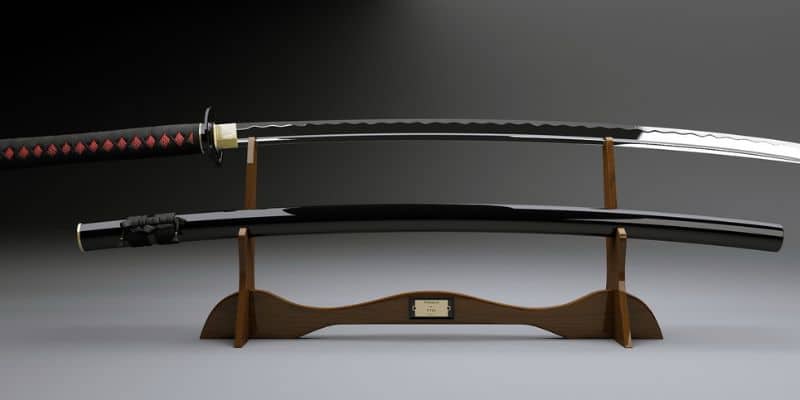
Description and Significance
The katana is a masterfully crafted sword, known for its sharpness, strength, and beauty. It typically measures between 60 to 80 centimeters in length and has a slight curve, making it perfect for quick, precise cuts. The katana’s craftsmanship is a meticulous process, involving the folding and hammering of steel to create a blade that is both flexible and incredibly strong. This dedication to quality made the katana a symbol of the samurai’s own discipline and precision.
Symbolism of the Katana in Samurai Culture
In samurai culture, the katana was much more than a tool for combat. It was a symbol of a samurai’s soul and identity. Carrying a katana was a privilege and a responsibility, marking the bearer as a person of honor and integrity. The sword was often passed down through generations, becoming a cherished family heirloom. It was a constant reminder of a samurai’s lineage and the legacy they were expected to uphold.
The Katana as a Representation of Honor and Duty
For the samurai, the katana represented their honor and duty. The samurai adhered to the Bushido code, which emphasized values such as loyalty, courage, and righteousness. The katana, always by their side, served as a physical embodiment of these principles. To draw the katana was to commit to its use with honor, and to wield it unjustly was to dishonor oneself and one’s family.
In battle, the katana was not just a weapon but a reflection of the samurai’s inner strength and commitment to their code. The act of drawing the katana was performed with reverence, and the way it was used in combat demonstrated the samurai’s mastery and dedication.
Crests (Kamon)
In samurai culture, family crests, known as kamon, played a significant role in identifying and distinguishing noble families. These crests were not just decorative symbols but held deep meanings and conveyed important information about the heritage and values of the samurai.

Explanation of Samurai Family Crests (Kamon)
Kamon are unique emblems that represent a samurai family’s lineage and status. Each crest is carefully designed with specific symbols, patterns, and shapes that hold particular significance. These crests were used on clothing, armor, flags, and household items to denote the family they belonged to. Just like a modern-day family name or coat of arms, kamon were a source of pride and identity for samurai families.
Examples of Common Kamon and Their Meanings
Many kamon feature elements from nature, reflecting the samurai’s deep connection to their environment. Here are a few common examples:
- Chrysanthemum (Kiku): Often associated with the imperial family, the chrysanthemum symbolizes longevity and rejuvenation. It represents the beauty and elegance that the samurai aspired to embody.
- Wisteria (Fuji): The wisteria flower is a symbol of steadfastness and endurance. It signifies a family’s resilience and their ability to thrive despite challenges.
- Plum Blossom (Ume): Plum blossoms represent renewal and perseverance. They bloom early in the spring, often amidst the last of winter’s chill, symbolizing hope and determination.
- Butterfly (Chō): Butterflies are a symbol of transformation and grace. They represent the journey of the samurai from novice to master, embodying personal growth and elegance.
The Role of Crests in Identifying Samurai Families and Their Heritage
Kamon served as important identifiers on the battlefield and in everyday life. In battles, crests on flags and armor helped distinguish allies from enemies, reducing confusion and fostering unity among troops. These crests also conveyed messages about a samurai’s heritage and the honor of their family line.
In daily life, kamon were a constant reminder of a samurai’s lineage and the responsibilities that came with it. The crests linked individuals to their ancestors and reinforced their duty to uphold their family’s reputation and values. Displaying the kamon was a way to honor one’s forebears and ensure that their legacy continued through the generations.
Cherry Blossoms (Sakura)
Cherry blossoms, known as sakura, hold a special place in Japanese culture and are deeply intertwined with the samurai’s way of life. These delicate flowers are not just a beautiful sight; they carry profound symbolism that resonates with the values and philosophies of the samurai.
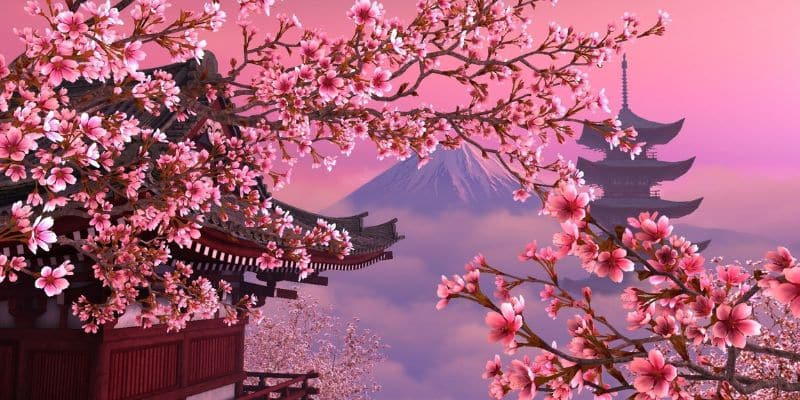
Symbolism of Cherry Blossoms in Japanese Culture
In Japan, cherry blossoms are celebrated for their stunning beauty and brief blooming period. Each spring, people gather to admire the sakura in a tradition called hanami, which means “flower viewing.” The fleeting nature of the blossoms, which bloom in full glory only to fall within a short time, symbolizes the transient nature of life. This concept is deeply ingrained in Japanese aesthetics and philosophy, emphasizing the appreciation of beauty in the moment.
The Connection Between Sakura and the Samurai Code (Bushido)
For the samurai, sakura held a special significance that went beyond their visual appeal. The samurai followed a strict ethical code known as Bushido, which emphasized principles such as loyalty, honor, and the acceptance of one’s fate. Cherry blossoms became a powerful metaphor for the samurai’s life and values.
Just as the cherry blossoms bloom brilliantly but briefly, the samurai embraced the idea that life is short and should be lived with honor and purpose. They were taught to appreciate each moment and to face death with dignity, much like the cherry blossom that falls gracefully to the ground. This connection reinforced the samurai’s commitment to their code and their readiness to sacrifice for their ideals.
Representation of the Fleeting Nature of Life and Beauty
Cherry blossoms perfectly capture the concept of impermanence, a central theme in Japanese culture and samurai philosophy. The short-lived beauty of sakura reminds us that life is transient and that we should cherish every moment. For the samurai, this symbolism served as a constant reminder to live honorably and to fulfill their duties with dedication and integrity.
The blossoms’ delicate nature also represents the balance between strength and fragility. While the samurai were fierce warriors, they were also expected to appreciate the finer aspects of life, such as poetry, art, and nature. The sakura embodies this duality, symbolizing both the warrior’s strength and the fleeting beauty of life.
Dragons (Ryu)
Dragons, known as ryu in Japanese, are powerful and revered creatures in Japanese mythology. They hold a special place in samurai culture, symbolizing key virtues that the samurai strived to embody.
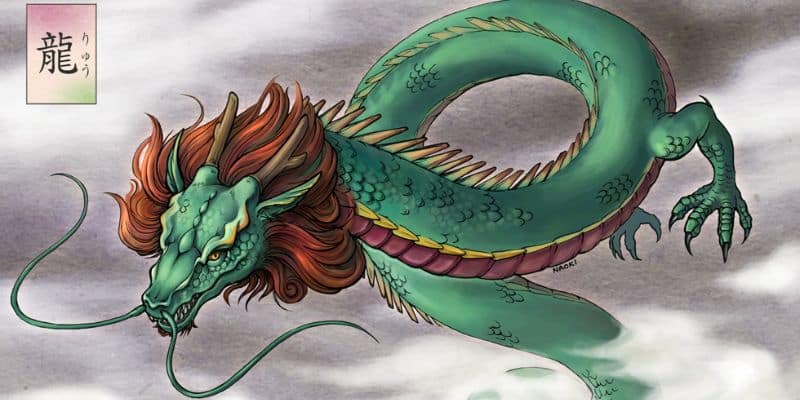
Significance of Dragons in Japanese Mythology
In Japanese mythology, dragons are mighty beings that often appear as protectors of natural elements like water and rain. They are depicted as serpentine creatures with long, winding bodies, capable of controlling the weather and the seas. Unlike Western dragons, which are often seen as menacing and destructive, Japanese dragons are generally considered wise, benevolent, and protective.
The Dragon as a Symbol of Strength, Courage, and Wisdom
For the samurai, the dragon symbolized strength, courage, and wisdom—qualities that were essential to their way of life. Dragons were seen as guardians of knowledge and power, embodying the perfect balance between ferocity and intellect.
- Strength: Dragons represented unparalleled power and resilience. Just as a dragon could control the natural forces, samurai were expected to master their own strength and abilities.
- Courage: The dragon’s fearlessness in facing any challenge or enemy mirrored the bravery required of a samurai on the battlefield. Dragons were seen as fearless warriors of the mythical world.
- Wisdom: Dragons were also symbols of deep wisdom and knowledge. The samurai valued intellect and strategic thinking, qualities that were essential for leadership and victory in battle.
Use of Dragon Imagery in Samurai Armor and Weapons
Dragon imagery was commonly used in samurai armor and weapons, serving as a source of inspiration and protection. Dragons were intricately depicted on helmets, chest plates, and even the hilts of swords.
- Armor: The presence of dragon motifs on armor was believed to imbue the samurai with the dragon’s strength and courage, providing both physical and spiritual protection.
- Weapons: Dragon designs on weapons like katanas not only added to their aesthetic appeal but also served as a reminder of the warrior’s duty to fight with honor and wisdom.
By incorporating dragon imagery, samurai aligned themselves with these majestic creatures, drawing on their symbolic power to enhance their own capabilities and spirit.
Tigers (Tora)
Tigers, known as tora in Japanese, are prominent symbols in samurai culture, representing bravery and power. The majestic tiger’s presence in samurai art, heraldry, and folklore underscores its importance in conveying key virtues that samurai admired and sought to embody.
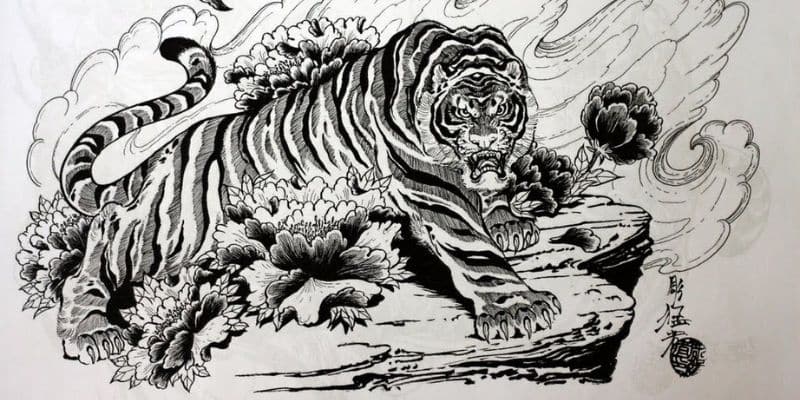
The Tiger as a Symbol of Bravery and Power
Tigers are admired for their strength, fearlessness, and commanding presence. In samurai culture, the tiger became a symbol of bravery and power, qualities that were essential for a warrior.
- Bravery: The tiger’s fearlessness in facing adversaries symbolizes the courage that samurai needed in battle. A samurai, like a tiger, was expected to confront challenges head-on without hesitation.
- Power: The physical strength and dominance of a tiger reflect the power and prowess that samurai aimed to achieve. Tigers are powerful hunters, and their strength serves as an ideal representation of a samurai’s martial skills.
Depictions of Tigers in Samurai Art and Heraldry
Tigers were commonly depicted in samurai art and heraldry, emphasizing their revered status.
- Art: Paintings, woodblock prints, and other forms of art often featured tigers in dynamic and powerful poses. These artworks highlighted the tiger’s ferocity and strength, inspiring samurai to emulate these qualities.
- Heraldry: Tiger motifs were frequently used in samurai crests (kamon) and on armor. These symbols served as a visual representation of the warrior’s bravery and power, instilling fear in enemies and boosting the morale of allies.
The Tiger’s Role in Samurai Folklore and Stories
Tigers also played a significant role in samurai folklore and stories, further cementing their symbolic importance.
- Folklore: Tales of samurai encounters with tigers often depicted the animals as both formidable adversaries and respected symbols of strength. These stories reinforced the tiger’s association with bravery and martial prowess.
- Legends: In some legends, samurai who defeated or befriended tigers were seen as exceptionally brave and powerful, their deeds celebrated and remembered for generations. These stories served as moral lessons, teaching the values of courage and strength.
Tigers embodied the virtues that samurai strived for, making them enduring symbols of bravery and power in the rich tapestry of samurai symbolism.
Mount Fuji
Mount Fuji, Japan’s highest and most iconic peak, holds profound spiritual and cultural significance. For the samurai, Mount Fuji represented endurance, perseverance, and a source of inspiration, often depicted in their art and literature.
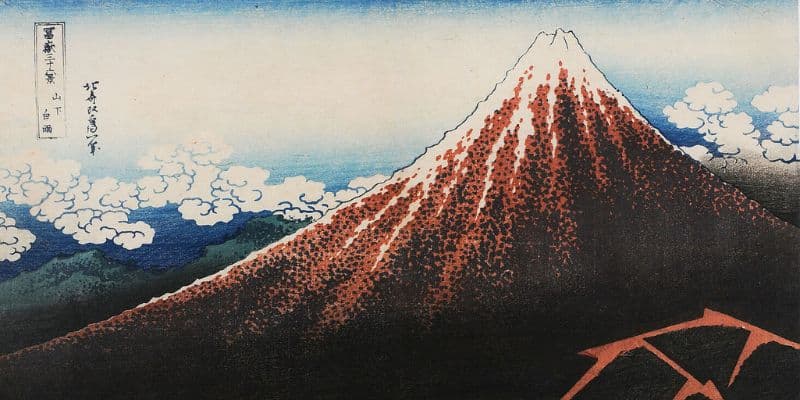
The Spiritual and Cultural Importance of Mount Fuji in Japan
Mount Fuji, or Fuji-san, is revered as a sacred mountain in Japan. It has been a site for pilgrimage for centuries, attracting people seeking spiritual growth and enlightenment. The mountain’s serene and majestic presence has made it a symbol of beauty and a subject of reverence in Japanese culture.
Mount Fuji as a Symbol of Endurance and Perseverance
For the samurai, Mount Fuji symbolized endurance and perseverance. Its towering height and the challenges of climbing it represented the physical and mental fortitude required to overcome obstacles.
- Endurance: The mountain’s unyielding presence through seasons and ages mirrors the samurai’s need for resilience. Like Mount Fuji standing tall through all conditions, samurai were expected to remain steadfast in their duties.
- Perseverance: Climbing Mount Fuji was seen as a test of perseverance. The journey to the summit symbolized the samurai’s path, requiring dedication, strength, and a never-give-up attitude.

Representation of Mount Fuji in Samurai Art and Literature
Mount Fuji frequently appeared in samurai art and literature, serving as a powerful symbol of their values and ideals.
- Art: Samurai artists often depicted Mount Fuji in paintings and prints, highlighting its majestic beauty and symbolic significance. These artworks were not just aesthetic pieces but also conveyed the virtues of endurance and perseverance.
- Literature: In samurai literature, Mount Fuji was a common metaphor for the challenges and aspirations of a warrior’s life. Stories and poems often used the mountain to illustrate the journey of personal growth, the pursuit of honor, and the importance of resilience.
The mountain’s enduring presence continues to inspire and symbolize the timeless qualities of endurance and perseverance, reflecting the spirit of the samurai.
Cranes (Tsuru)
Cranes, known as tsuru in Japanese, are cherished symbols in Japanese culture, representing longevity and good fortune. In samurai culture, cranes held a special place, symbolizing the ideals and aspirations of the warriors.
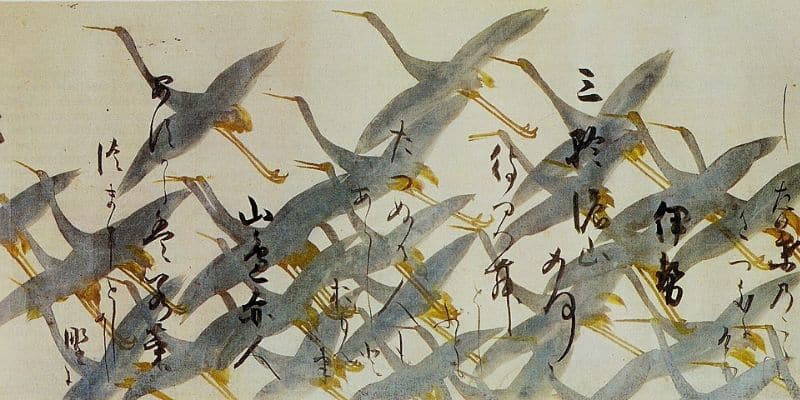
The Crane as a Symbol of Longevity and Good Fortune
In Japanese culture, cranes are revered for their grace and beauty. They are believed to live for a thousand years, making them powerful symbols of longevity and enduring health. Additionally, cranes are seen as harbingers of good fortune and happiness. This belief stems from ancient folklore and has been passed down through generations.
The Significance of Cranes in Japanese Culture and Samurai Symbolism
Cranes hold a special place in Japanese culture, often appearing in art, literature, and ceremonies. Their significance extends to samurai symbolism, where they represent important virtues and ideals.
- Longevity: The crane’s association with long life made it a symbol of the samurai’s desire for enduring strength and vitality. It reflected the wish for a long and honorable life, filled with health and vigor.
- Good Fortune: As symbols of good luck, cranes embodied the samurai’s hope for success and prosperity in their endeavors. They represented the positive outcomes that come from living a life of honor and dedication.
- Elegance and Grace: The crane’s elegant appearance and serene demeanor resonated with the samurai’s appreciation for beauty and poise. It symbolized the balance between strength and grace that the samurai aspired to achieve.
Use of Crane Imagery in Samurai Attire and Decorations
Crane imagery was commonly used in samurai attire and decorations, enhancing their symbolic presence in daily life and ceremonial contexts.
- Attire: Cranes were often depicted on kimono, armor, and other clothing items worn by samurai. These images served as a reminder of the values of longevity and good fortune, reinforcing the warrior’s commitment to these ideals.
- Decorations: Cranes appeared in various forms of decoration, including family crests (kamon), weapon embellishments, and household items. The presence of crane motifs in these items symbolized the samurai’s connection to the positive attributes associated with the bird.
Bamboo
Bamboo, a plant deeply rooted in Japanese culture, symbolizes resilience and flexibility. For the samurai, bamboo represented key qualities they sought to embody, playing a significant role in their training and philosophy.

Symbolism of Bamboo in Japanese Culture
In Japan, bamboo is a symbol of strength, endurance, and adaptability. It grows rapidly and remains green year-round, even in harsh conditions, symbolizing perseverance and renewal. Bamboo’s hollow structure and ability to bend without breaking also make it a powerful symbol of humility and resilience.
Bamboo as a Representation of Resilience and Flexibility
For the samurai, bamboo perfectly represented the qualities of resilience and flexibility:
- Resilience: Just as bamboo can withstand strong winds and adverse conditions, samurai were expected to endure hardships and challenges without losing their spirit. Bamboo’s ability to thrive in tough environments mirrored the samurai’s strength and perseverance.
- Flexibility: Bamboo’s flexibility, bending but not breaking under pressure, symbolized the samurai’s ability to adapt and remain steadfast. This quality was essential for samurai, who needed to be both strong and adaptable in combat and life.
The Importance of Bamboo in Samurai Training and Philosophy
Bamboo played a crucial role in samurai training and their philosophical outlook:
- Training: Bamboo was used in various training tools and weapons, such as the shinai, a bamboo sword used in kendo practice. The shinai allowed samurai to practice their swordsmanship safely while emphasizing the importance of flexibility and precision.
- Philosophy: Bamboo’s qualities influenced samurai philosophy, teaching them to remain humble, adaptable, and strong. The way bamboo bends in the wind reminded samurai to be flexible in their thinking and actions, yet resilient in their principles and goals.
Bamboo’s enduring strength and adaptable nature served as constant reminders for the samurai to persevere and remain flexible in their pursuit of honor and excellence. This plant’s significance in samurai culture highlights the timeless lessons of resilience and flexibility that continue to inspire people today.
The Code of Bushido and Its Symbols
The Code of Bushido, a fundamental aspect of samurai culture, encompasses a set of principles that governed the lives and actions of these noble warriors. Understanding Bushido and its associated symbols helps you appreciate the deep moral and ethical framework that shaped the samurai.
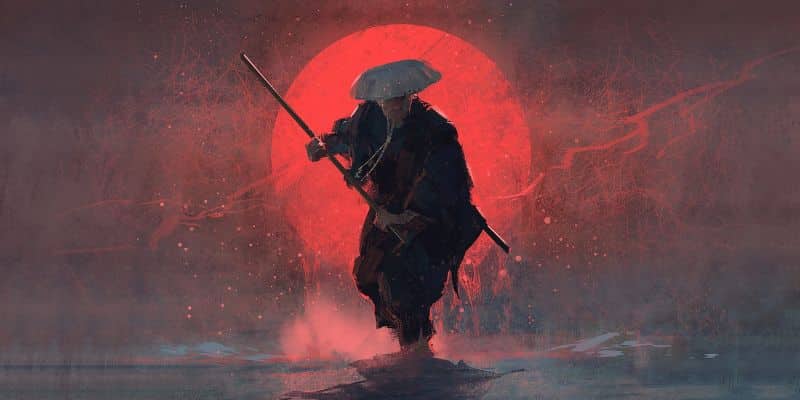
Bushido Code and Its Principles
Bushido, meaning “the way of the warrior,” is a code of conduct that samurai followed with unwavering commitment. This code is built on seven core principles:
- Gi (Righteousness): Acting with integrity and making morally right decisions.
- Yu (Courage): Facing danger and adversity with bravery.
- Jin (Benevolence): Showing compassion and kindness to others.
- Rei (Respect): Demonstrating courtesy and respect in all interactions.
- Makoto (Honesty): Being truthful and sincere in one’s actions and words.
- Meiyo (Honor): Upholding one’s honor and reputation through noble deeds.
- Chugi (Loyalty): Remaining faithful and dedicated to one’s lord and comrades.
These principles were not just ideals but a way of life for the samurai, guiding their behavior both on and off the battlefield.
Symbols Associated with the Bushido Code
Each principle of Bushido is associated with specific symbols that visually represent these values:
- Honesty (Makoto): Often symbolized by an open, empty circle, representing transparency and truth.
- Loyalty (Chugi): Represented by the chrysanthemum, a symbol of steadfastness and devotion.
- Respect (Rei): Depicted through the crane, symbolizing grace and respectful conduct.
- Courage (Yu): The tiger, embodying fearlessness and strength in the face of adversity.
- Benevolence (Jin): The plum blossom, representing compassion and nurturing growth.
- Honor (Meiyo): The samurai sword (katana), symbolizing the warrior’s honor and duty.
- Righteousness (Gi): The bamboo, standing tall and true, representing moral integrity.
How These Symbols Were Incorporated into Samurai Life and Practice
These symbols were deeply integrated into the daily lives and practices of the samurai:
- Armor and Weapons: Symbols were often engraved or painted on samurai armor, helmets, and weapons, serving as constant reminders of their values. For example, a katana with an inscribed symbol of honor reinforced the warrior’s commitment to their code.
- Clothing and Crests: Samurai attire, including kimonos and family crests (kamon), featured these symbols to publicly display their adherence to Bushido principles.
- Ceremonies and Rituals: Symbols were used in various ceremonies and rituals, reinforcing the importance of Bushido values. These symbols were also present in the architecture and decoration of samurai homes and training grounds.
By incorporating these symbols into every aspect of their lives, samurai ensured that the principles of Bushido were ever-present, guiding their actions and decisions.
Samurai Symbols Today
Samurai symbols have a lasting impact on both Japanese and global culture. These symbols, which once guided the lives of noble warriors, continue to inspire and influence contemporary art, fashion, media, and popular culture.

Shop Modern Samurai Streetwear T-shirts >>
The Influence of Samurai Symbols in Modern Japanese Culture
In modern Japan, samurai symbols remain deeply rooted in the cultural landscape. These symbols are not only a reminder of the country’s rich history but also serve as sources of inspiration and pride. You can see samurai symbols in various aspects of daily life, from traditional festivals and ceremonies to the design of everyday items.
Examples of Samurai Symbols in Contemporary Art, Fashion, and Media
Samurai symbols have found their way into many facets of contemporary art, fashion, and media:
- Art: Modern Japanese artists often incorporate samurai symbols into their work, blending traditional elements with contemporary styles. Paintings, sculptures, and graphic designs frequently feature motifs like the katana, cherry blossoms, and dragons, creating a bridge between the past and present.
- Fashion: Samurai symbols are popular in modern fashion, appearing on clothing, accessories, and even tattoos. Samurai T-shirts, jackets, and accessories often feature designs inspired by samurai armor, family crests (kamon), and other traditional symbols, appealing to those who admire the samurai’s virtues and aesthetics.
- Media: Samurai themes are prevalent in movies, anime, and video games. Characters often embody the principles of Bushido, and storylines are enriched with references to samurai culture. Popular series like “Samurai Champloo” and “Ghost of Tsushima” showcase these symbols, bringing samurai values to a global audience.
The Enduring Legacy of Samurai Symbols in Global Popular Culture
The influence of samurai symbols extends beyond Japan, resonating with people worldwide. These symbols represent universal values such as honor, courage, and resilience, making them appealing across different cultures.
- Movies and Television: Samurai-inspired themes and characters are common in Western cinema and TV shows. Films like “The Last Samurai” and characters like Leonardo from “Teenage Mutant Ninja Turtles” highlight the global fascination with samurai culture.
- Video Games: Many video games feature samurai characters and themes, allowing players to engage with samurai symbols and Bushido principles. Games like “Sekiro: Shadows Die Twice” and “Nioh” immerse players in samurai-inspired worlds.
- Fashion and Design: Global fashion brands often incorporate samurai symbols into their designs, appealing to a broader audience. These symbols are used to convey strength, elegance, and a connection to a storied past.
Whether in Japan or around the world, samurai symbols remain powerful representations of enduring values and timeless aesthetics, bridging the past with the present and future.

Conclusion
Samurai symbols hold deep significance and rich meanings that have shaped Japanese culture for centuries. From the katana’s representation of honor and duty to the cherry blossom’s embodiment of life’s fleeting beauty, these symbols capture the essence of the samurai’s values and way of life. Each symbol, whether it’s the tiger’s bravery, the crane’s longevity, or Mount Fuji’s endurance, tells a story of the samurai’s dedication to Bushido and their relentless pursuit of excellence.
The lasting impact of samurai symbols extends far beyond Japan. These powerful emblems continue to inspire art, fashion, and media around the world, resonating with people who admire the timeless virtues of courage, resilience, and honor. By understanding and appreciating these symbols, you gain insight into a heritage that values both strength and grace, discipline and beauty.
As you explore the world of samurai symbolism, take a moment to reflect on how these ancient values can inspire and guide you in your own life. Whether you find them in a piece of art, a fashion item, or a compelling story, samurai symbols offer a profound connection to a storied past and a source of inspiration for the future. Embrace the opportunity to delve deeper into this fascinating heritage and appreciate the enduring legacy of the samurai.

